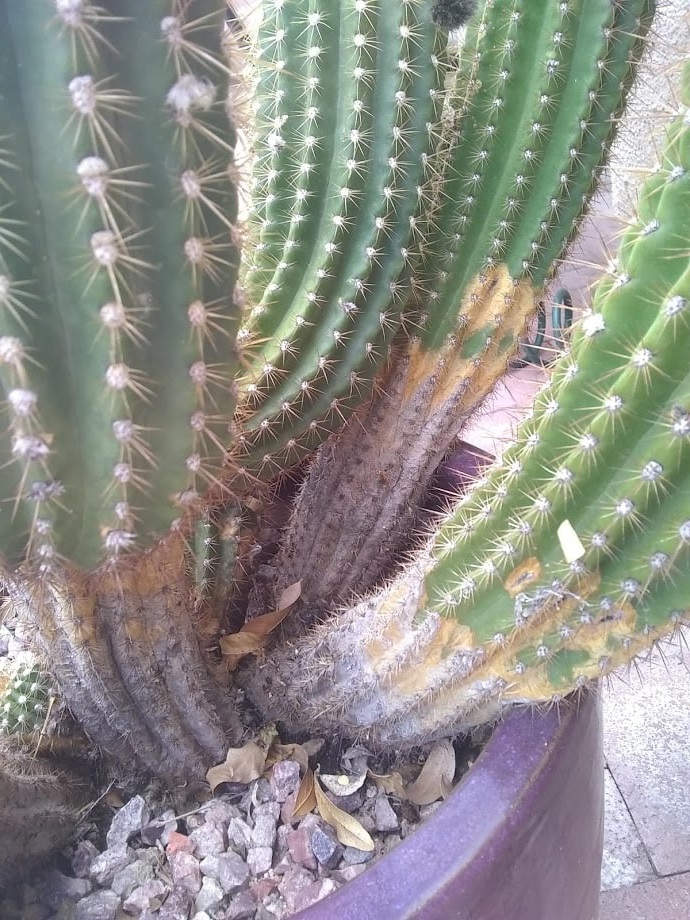Cactus Turning Brown? These 7 Shocking Reasons Will Surprise You
You got a cute little cactus for your room, and it looked so pretty and healthy. But now, you’ve noticed some weird brown spots or discoloration. What could be going on? Is your beloved prickly pal dying? Don’t freak out just yet! There are several surprising reasons why cacti turn brown, and most of them are pretty easy to fix. Get ready to have your mind blown by these seven shocking causes behind your cactus’s sandy makeover.

Contents
7 Reasons for Cactus Turning Brown
1. You’re Drowning It
Sure, cacti are desert plants, but that doesn’t mean they can hold their breath underwater! Overwatering is a super common mishap that turns these guys an ugly brown color. The soil gets too soggy, the roots get damaged, and before you know it, your cactus is sporting an unpleasant new look. The fix? Ditch the daily watering routine and let the soil dry out completely between drinks.

2. Sunburn, Sunburn!
You wouldn’t want to spend all day cooking under the blazing sun with no protection, right? Well, neither does your cactus! Direct, intense sunlight can actually burn and discolor these plants, leaving nasty brown spots and sunspots. Make sure to give your spiky friend some shade, especially from harsh afternoon rays.
3. Hunger Games
Like all living things, cacti need a balanced diet to thrive. If the soil is missing key nutrients like magnesium, iron, or potassium, your plant will start showing signs of deficiency…including unsightly brown patches. Luckily, adding some cactus fertilizer or compost can replenish those minimal levels and bring back its healthy green glow.

4. Winter Woes
When the temperatures drop, cacti go into hibernation mode. But if the conditions aren’t right, things can go awry. Too much cold and humidity can trigger nasty rot that spreads wicked brown blotches all over. To keep your cactus comfy in winter, provide a dry, cool, and dark space around 40-50°F.
5. Tiny Troublemakers
Spotted some strange bumps or webbing? You might have some pesky uninvited houseguests. Fungus, scale insects, and spider mites all cause gross brown blemishes by feasting on your poor cactus. Do some pest detection and hit any critters you find with an insecticide or alcohol spray.

6. The Rot Situation
In some cases, those brown blotches are actually rot, a serious cactus-killer caused by moisture getting inside. It can target the roots or main stem. If you see any sunken, soggy areas, act fast! Remove the rotten parts right away and repot in dry soil.
7. Aging Gracefully
Weird as it sounds, sometimes the browning is just your cactus putting on the natural equivalent of “anti-aging cream.” As cacti get older, their stems start corking over and turning brown and bark-like to provide more support. No need to panic over this one – it’s a normal part of the life cycle.

But wait, you probably have some other burning cactus questions, right? Let’s cover a few FAQs:
Why Is My Cactus Turning Brown and Soft at The Bottom?
Yikes, a mushy base is definitely not a good sign. This usually means the roots are rotting from being constantly wet and humid. Cacti are drought-loving plants, so leaving them in soggy soil for too long is a no-no. You may also see this if your cactus hasn’t been watered in an extremely long time and has exhausted all its stored moisture.
How Do You Fix a Cactus That Turns Brown?
Don’t panic – brown cacti can make a comeback! First, identify the underlying cause. If it’s a watering issue, adjust accordingly. For pests or fungus, use an insecticide or fungicide. Sunburn calls for relocating to a shadier spot. And if rot has set in, you’ll need to remove the affected areas and repot in fresh dry soil.
Can a Brown Cactus Turn Green Again?
You betcha! As long as the cactus is still hanging in there, some TLC can help revive it back to perfect green health. Just be patient and give it the proper environment, soil, and care. With time, you should start seeing new green growth.
Should I Cut off Brown Cactus?
For dry, crispy brown parts, it’s generally okay to prune them off to make room for new growth. Just make sure to use a sharp, sterile knife and avoid cutting into any green areas. If the brown spots are still soft and mushy, hold off on removing them until they’re dried out.
